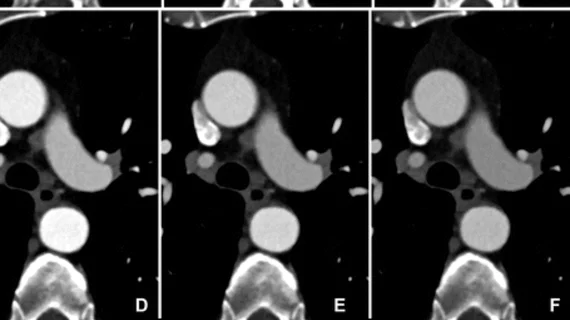Photon counting cuts CTA contrast dosage 25%
With the use of photon-counting detectors, CT angiography (CTA) exams require significantly less contrast media.
Compared to CTA with conventional energy-integrating detector (EID) CT, photon-counting detectors reduce the need for iodinated contrast by approximately 25% without sacrificing image quality.
This finding was detailed on Jan. 26 in Radiology: Cardiothoracic Imaging, where experts involved in the work suggested that not only does the low-volume contrast protocol preserve supplies, it also protects patients who might be vulnerable to adverse reactions and/or side effects from contrast use.
“Many patients undergoing CTA of the aorta are elderly, and some may suffer from a certain degree of nephropathy,” noted the study’s senior author Hatem Alkadhi, MD, from the Department of Diagnostic and Interventional Radiology at University Hospital Zurich in Zurich, Switzerland. “Thus, they might be at risk for a further reduction of their kidney function due to contrast media administration.”
For the study, experts had 100 participants who had previously undergone a conventional CTA scan of the aorta complete a new CTA with photon-counting detector CT.
According to two readers, the photon-counting CT exams had superior image quality in comparison to the conventional scans. Image quality came without an increase in radiation exposure (both scans used equivalent amounts) and required 25% less contrast.
“Image quality remained at the same level as that of previous CT angiography examinations in the same patients using a conventional CT, despite the fact that we reduced the contrast media volume,” Alkadhi said.
Alkadhi suggested that photon-counting detectors will become the reference standard for CTA in the future. Since this research concluded, he and his colleagues have adjusted their CTA protocols to include lower contrast doses.
The study abstract is available here.

